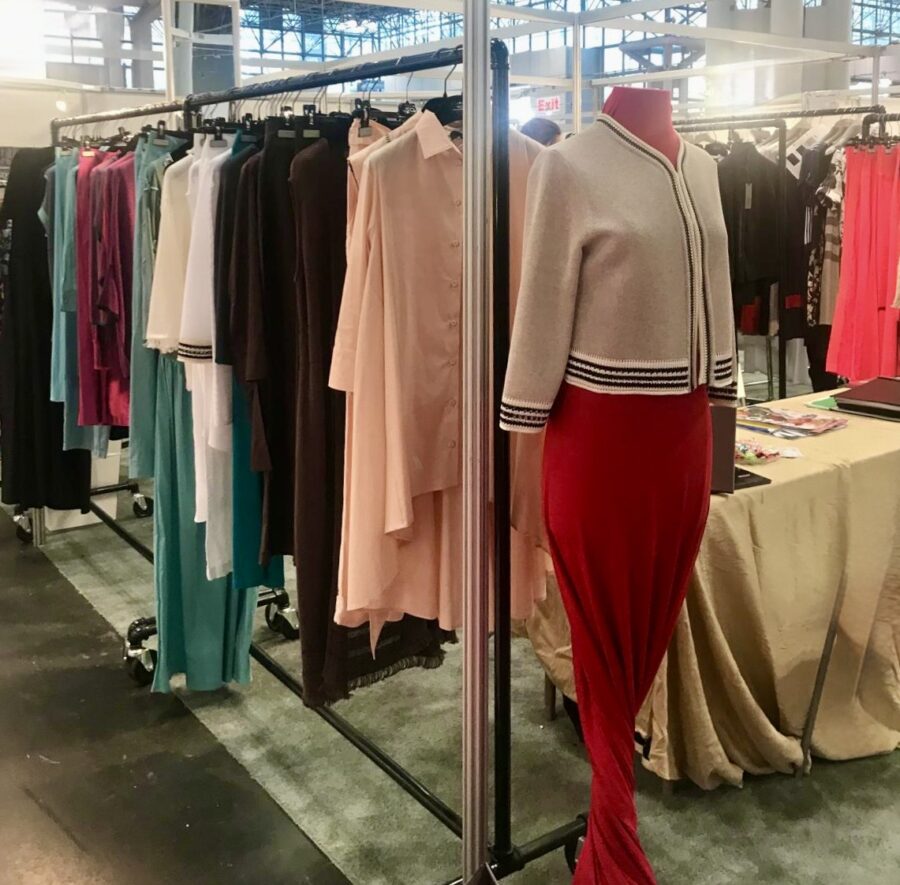From Caserta, in the Italian region of Campania, Lino Puccio’s American adventure began with an unexpected question, “Where do overweight Americans buy their underwear?” Far from being trivial, this reflection paved the way for a revolutionary vision in the fashion world, in which inclusivity becomes an indispensable value. Conquered by the American dream at a very young age, since the early 1980s Lino has traversed a 35-year career as a commercial agent, transforming traditional aesthetic canons and giving a voice to those whom fashion did not hold in esteem.
Although he has recently relinquished his place in the commercial sphere, Lino’s future is still in fashion, but in the academic corridors, where his legacy will become a guide for new talent. From his office in the New York Fashion District near Times Square, which for decades has welcomed industry insiders, buyers and even rabbis, he tells us about the insights that led to his success, as well as inclusivity and ethics, stating with deep conviction that “fashion has no choice but to be democratic.”
Lino, after your studies at the Orientale University in Naples, you came to America. How did that come about?
A dream come true, with no clear idea of the future. As with so many, I started from odd jobs: waiter, store clerk, caregiver, teacher of Italian, but also of Neapolitan dialect.
Of dialect?
Yes, during an evening at the Opera I attended a performance of Torna a Surriento. I immediately noticed that the singer’s body movements and words were out of sync, so I proposed myself as a teacher. Among my many students, there were those from the world-renowned conservatory, The Juilliard School in New York.
How did your path in fashion begin?
By traveling. I decided to explore the United States far and wide aboard the Greyhound buses. What struck me were the plus-size people, the vast majority. Plus, they were poorly dressed because the stores lacked stylish, high-quality clothing for plus-size women. In New York itself, where Italian prêt-à-porter was becoming established at that time, upper-class women were buying Gucci, Salvatore Ferragamo, Valentino, but those with softer shapes had few options.
You saw an opportunity. What strategy did you adopt?
I contacted Italian companies to develop a business model that focused on the diversity of body shapes. We studied fabrics, yarns and special cuts together. I delved into the strength of knitting yarn, so much so that one company developed a dedicated machine. This was revolutionary, because if a garment highlighted critical areas, such as under the arm, the plus-size customer would not buy it.

In the early 1990s you decided to set up on your own. How did you develop your method?
It was a crucial moment. I chose only companies willing to follow my lead and promote the collections in a new way. I organized trunk shows at country clubs and the most exclusive boutiques in the United States, creating a direct link with a select clientele. In parallel, I introduced seminars in department stores, such as Saks Fifth Avenue, teaching sales techniques that combined technical approach and emotional involvement. I have always believed in direct marketing, using catalogs sent to female consumers to encourage attendance at trunk shows and consolidate acceptance. One of the keys to success was visibility.
In short, you revolutionized the plus-size industry.
It was just the starting point. Then I thought about all types of women. For example, creating ‘J sizes’ patterns (the ‘J’ stands for Japan) for Asian women, made the garment ready to wear without having to make changes, making the customer feel immediately represented. It was a winning idea.
Is inclusivity a value that can transform fashion?
Inclusivity is not just about size, but about representation and identity, responding to the needs of an increasingly diverse society. The issue has been central for years, but there is still a long way to go: without a concrete change in production, many categories will continue to be ignored, and inclusivity will risk remaining just a façade concept, reduced to a marketing strategy rather than a real revolution in the industry.
What experiences have most influenced your path?
My studies in cultural anthropology and ethnology allowed me to understand the deep connection between fashion and culture. A significant example was my relationship with the vibrant but reserved Orthodox Jewish community. Religious norms may seem like an obstacle for an ever-changing industry, but knowing Jewish culture in depth has given me the ability to adapt Made in Italy to their needs. From the length of the skirts to the volume of the sleeves, avoiding shatnez fabrics (combinations of linen and wool) and preferring only vegetable fibers, I respected every rule of the Torah.
How has fashion evolved over time?
Since the 1990s, with the rise of supermodels, the focus has shifted to image, often at the expense of innovation. Then the arrival of the Internet made everything faster and more fleeting, leading to an identity crisis in the industry. I find that today we need to reinvent ourselves to rediscover authenticity and substance.
How can the industry rediscover the balance between aesthetics and funcionality?
It needs to evolve toward greater democratization, integrating inclusiveness, sustainability and an ethical approach. This means not only ensuring fair access and representation, but also investing in innovative materials, low-impact production processes, and conscious consumption strategies. Only in this way can fashion build a future that authentically reflects the values and needs of contemporary society while staying abreast of environmental and social challenges.
What do you see in your future?
I will take my experience to universities, to open a dialogue with new generations and pass on all that I have learned. I am currently collaborating with two universities in Mexico, an extraordinary opportunity that has already given me valuable stimuli and comparisons. My goal is to replicate this experience in other institutions, exploring new perspectives.












